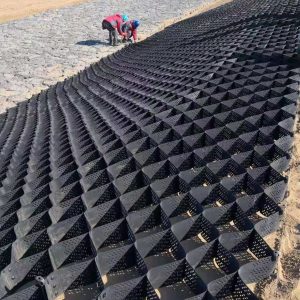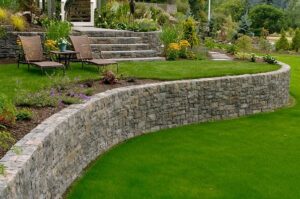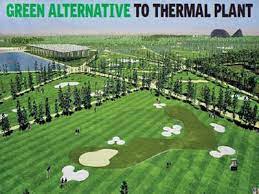Geocell Manufacturers

Geocells are a fantastic piece of technology that can offer a variety of benefits for your business. With geocells, you can stabilize soil, prevent erosion, or create a new surface for sports fields or parking lots. Hence, the article has covered all about geocell material and its benefits.
Table of Contents
What is a Geocell?
The geocell is a three-dimensional cellular structure filled with soil, gravel, or other material that stabilizes steep slopes and prevents erosion. They are constructed of high-density polyethylene (HDPE) and feature an open cell structure that allows them to conform to the terrain.
Using the right geocell material, you can wall off and confine soil, aggregate, or other infill materials. When these three-dimensional cellular structures are installed, they can be expanded to form flexible walls with interconnected strips that reinforce tensile strength and prevent movement by increasing compression due to environmental factors such as weathering while holding everything in place during installation.
As a result of applying pressure to the soil enclosed within a geocell, such as in the case of a load support application, lateral strains are generated on the perimeter cell walls. Due to the 3-D confinement zone, soil particles have reduced lateral mobility, but vertical loading results in a considerable amount of lateral stress and resistance at the soil/cell interface.
Types of Geocell Material
A variety of geocell material are available to address various issues associated with different soil types. Generally, geocells can be divided into perforated and non-perforated types.
There are small holes in perforated geocells that allow water and air to flow through. An application where soil must be able to breathe, such as in green infrastructure projects, is best suited for this type of geocell.
Moreover, the perforations improve the distribution of load and reduce distortion. It consists of a series of strips that are connected to form cells. Due to the strength of the perforated strip and the weld, the integrity of the geocell is determined.
The non-perforated geocell has smooth, solid walls and is suitable for applications in which water must be kept out, such as landfills. A smooth wall prevents the infiltration of water and helps to keep soil within the cell.
In some cases, geocells can be replaced with geomembranes or prefabricated vertical drains based on application specific requirements.
What are the Different Applications of Geocells?
Geocell grids have the potential to solve numerous issues across a wide range of industries. The following are the geocell uses in different industries.
- Road Construction
There are approximately four-fifths of the world’s roads that are unpaved gravel access roads. In many cases, these roads are constructed over unstable ground, such as clay bogs, peat bogs, or sand. In the absence of appropriate technology, these materials will disintegrate, posing a threat to the safety, stability, and lifespan of the highways.
- Landscape Architecture
Landscape architecture uses specialist technologies such as geocells to protect plants and soil from erosion. By installing a geocell grid, you can reduce the volume of runoff or groundwater flowing and prevent the creation of erosion channels that are hazardous to the environment.
- Load Platform
As a semi-rigid platform construction method, geocells are an excellent choice for weak soils or in areas where digging is restricted. The use of geocell grids increases the load capacity of grade slabs, foundation spreads, and strip footings. It is also possible to use cellular confinement systems in laydown areas, parking lots, and highways to minimize pavement sections.
- Retaining Wall, Embankment, and Levee Rebuilding
The use of geocells is an excellent method of controlling erosion along embankments and slopes. Additionally, they prevent the installation of water channeling, pond linings, or any other structure in soil with high levels of risk, such as slope instability.
- Green Roofs and Walls
The popularity of rooftop flower and vegetable gardens is on the rise in cities. These places are possible due to geocells’ expanded honeycomb construction that retains soil and enhances structural stability. Due to the use of geocell grids, green walls are also popular in certain houses and businesses.
Benefits of Geocell Material
- Providing protection and stabilization for steep slopes
Geocells are used to prevent slope erosion and to stabilize the surface. As a result of the cells conforming to the terrain, a three-dimensional wall is created that keeps soil particles from moving laterally.
Additionally, geocell uses include stabilizing slopes by reducing the amount of material required, resulting in a reduction in costs and time. It is also advantageous that they can be installed quickly and easily without requiring heavy machinery.
- Liner protection for channels and hydraulic structures
The geocell is used as a protective lining for canals and other hydraulic structures. In addition, the cells produce a three-dimensional wall that prevents soil particles from entering the waterway and causing pollution. Furthermore, the cells also prevent channel erosion.
- Support of static and dynamic loads on weak subgrade soils
Among other applications, geocells can also be used to support static and dynamic loads on weak subgrade soils. As a result of the cells, a three-dimensional grid is created that distributes the load over a larger area, which contributes to the prevention of soil failures.
- Durable infrastructure
In civil engineering, geocell uses include construction of roads and pavements because they provide a flexible foundation while retaining the soil’s integrity. Compared to paved roads, they are more capable of dispersing loads, which prevents most stress cracks from developing.
In conclusion, geocells provide a number of engineering, economic, and environmental advantages. It is a versatile, sustainable, and environmentally friendly solution for a wide range of applications.
Geocell Manufacturers and Suppliers
Ocean Global is the top geosynthetic materials producer and manufacturer in India. Geotextile, geogrid, geocells, geomembranes, geocomposite, and geonet are among the geosynthetics produced in India.
Their geocell panels are three-dimensional expanding panels made from high-density polyethylene (HDPE), polyester, or another polymer. The connecting strips serve as the walls of a flexible, three-dimensional cellular structure into which specific filler materials are placed and compressed during installation. This creates a free-draining system that maintains infill materials in place and prevents bulk movement by constraining them with tensile reinforcement. Cellular confinement technologies improve the structural and functional performance of soils and aggregate infill materials.
The Geocell technology developed by Ocean Global is an essential component of the civil engineering and transportation industries. They produce Geocells in India to fulfill the changing demands of diverse industries while reducing expenses. Due to the obvious increasing growth of infrastructure and roads across the world, they are in high demand.
Frequently Asked Questions (FAQ)
How many styles do geo cells have?
Geocells are divided into two categories: non-perforated and perforated.
What are geocells made of?
A Geocell product is a three-dimensional, expandable panel manufactured from polyethylene (HDPE), polyester, or another polymer.
What is the depth of the geocell?
There are also geocells available with cell depths of 50 mm, 75 mm, 100 mm, 150 mm, 200 mm, and 300 mm.
Is it possible to cut geocell?
With Geocell, you can stretch the material evenly to fit square applications or fan it out to fit curved areas. If necessary, panels can be cut using a hand saw or reciprocating saw.
What do you fill geocell with?
It is possible to fill a geocell with gravel, sand, dirt or grass.



